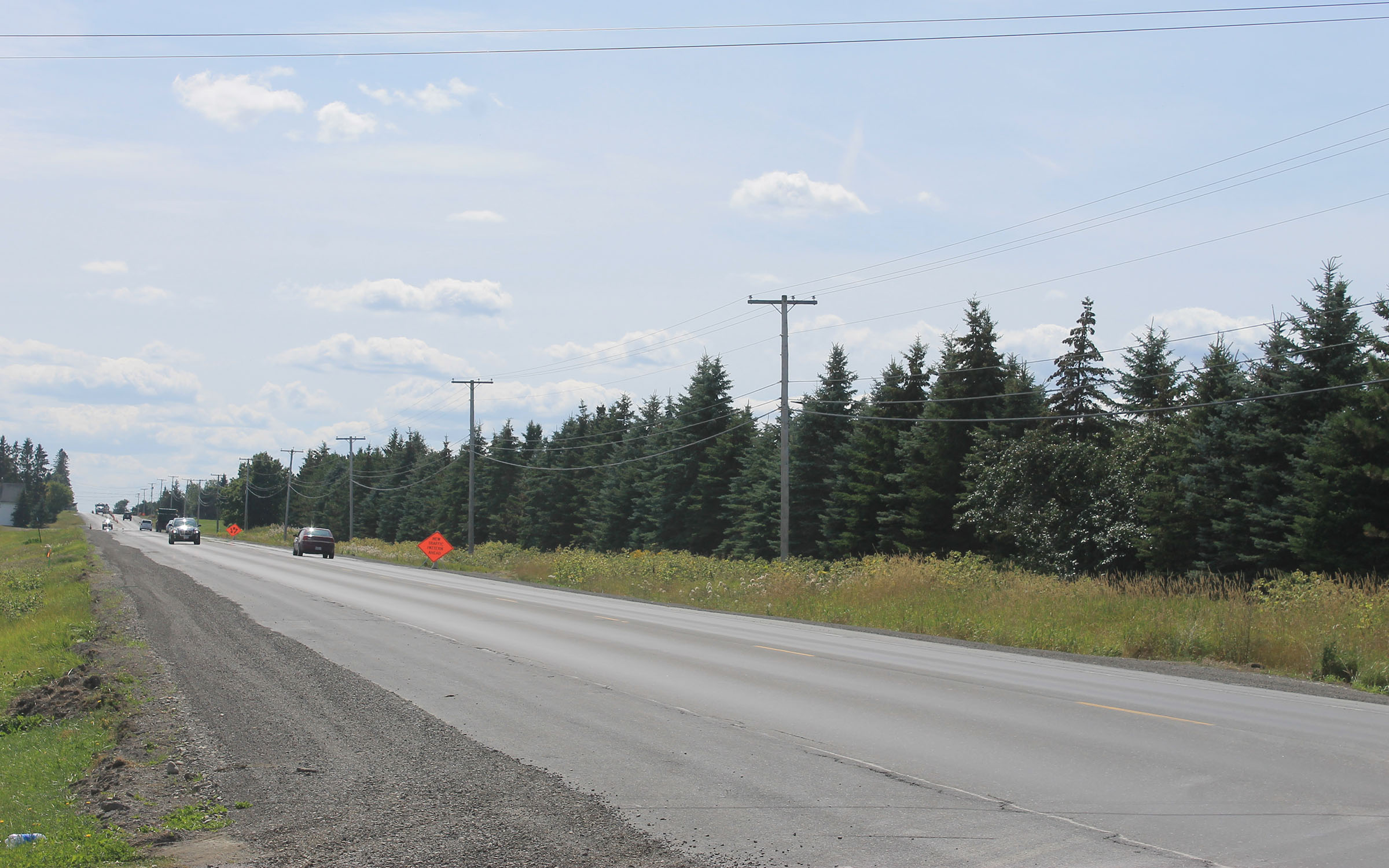
PRESQUE ISLE, Maine — Northern Maine’s westerly winds bring welcome breezes in the summer, but create major hazards in the winter when snow blows off large farm fields into roads.
After road closures, accidents and extra money spent on plowing during the exceptionally snowy and windy winter of 2018-19, the Maine Department of Transportation is working on expanding windbreaks tree plantings in Aroostook County along major corridors like Route 1.
“Roadside windbreaks such as trees or fencing have proven effective in other states,” said Paul Merrill, MDOT’s public information officer, in a statement. “These barriers slow winds, prevent snow drifts from forming on the roads, minimize icing on the roads, and help improve visibility for drivers.
- File photo of snowy conditions on Route 11. (Courtesy of Maine State Police)
“Our goal is to explore options that will help improve safety and mobility on all Maine roads during all seasons, but we are keenly aware of the difficulties last winter’s weather created in Aroostook County,” Merrill said.
Northern Maine saw more than 12 feet of snowfall last winter, about four feet more than average and the third snowiest on record in Caribou, according to National Weather Service.
Combined with extended periods of strong winds, all of that snow created major road safety hazards in the form of limited visibility, whiteout conditions and snow drifts in roads.
In late January, whiteout conditions led to an 11-vehicle crash on Route 1 just south of Van Buren, where a police chief and plow truck driver were struck and injured. After stepping out of his cruiser to assist a stranded driver, Van Buren Police Chief Michael Bresett was hit by a passing vehicle and crawled across the road to avoid being hit by another truck.
In February 2019, another stretch of heavy winds led police agencies and MDOT to close roads throughout Aroostook County, including the primary Route 1 corridor linking Presque Isle to Houlton.
In addition to road closures and crashes, repeatedly clearing snow drifts led to extra labor, fuel and equipment costs for MDOT and municipal governments.
In an interview in early February, Brent Bubar, engineer at MDOT’s northern region, said the spate of winter accidents prompted the agency to give windbreaks “a fresh look.”
The ideal windbreak to counter the prevailing winds coming from the northwest consists of several rows of densely planted evergreen trees set back as much as 200 feet from the road, Bubar said at the time.
One such windbreak, planted within the last two decades, spans approximately 1.5 miles along the western side of Route 1 at the north end of Presque Isle. A line of spruce, fir, pine and the occasional seedling apple and hardwood shrub stands between the road and agricultural fields that in some areas are more than half a mile wide.
Merrill said that MDOT is starting conversations about planting windbreaks with several dozen farmland owners in Aroostook County and hopes they will be receptive to collaboration.
“We are in the early stages of discussions with landowners regarding their willingness to let us plant trees on their properties,” Merrill said.








